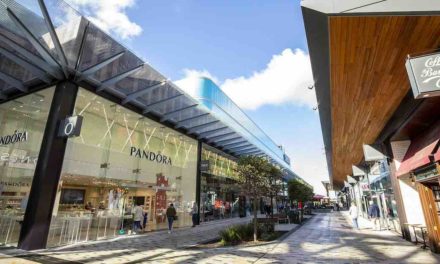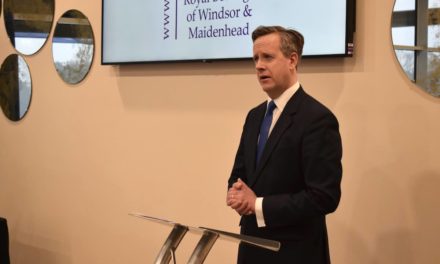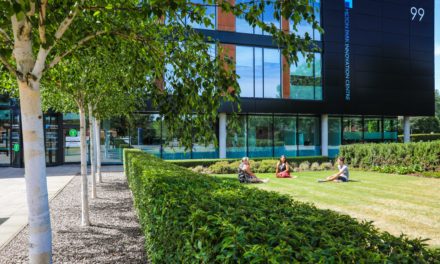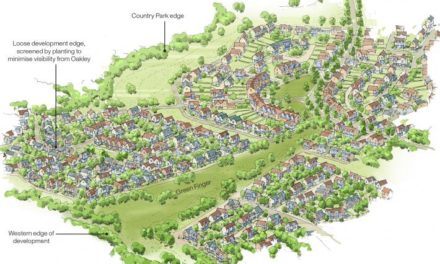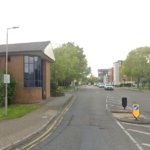With education technology (EdTech) really gaining traction whilst students and teachers find themselves remote from one another, architects and clients are now grappling with how to design learning spaces for a new era in which virtual-learning is woven intimately within the physical school environment. But what precisely is driving this change, why should we embrace it and how? Morse Webb director Dominic Morse explains.
The rise and rise of technology in the classroom
Digital technology within the education sector has become increasingly untethered. With a huge uptake in campus wide wi-fi connectivity, teachers are able to seamlessly cast their lessons to students’ inkable devices, granting them immediate access to all manner of digital resources during lessons. By return, students can actively engage on a one-to-one basis; immerse themselves in rich material and feed-back directly to the teacher.
Engagement with various digital teaching platforms has exploded in the last 12 weeks. With this level of uptake, British schools need to adapt their physical environment to accommodate the rapidly evolving expectations of both students, teachers and, ultimately, the global workplace.
I don’t think I’m necessarily advocating that teachers flee the classrooms to interact in some science-fiction VR world. Recently, the Headmaster of a renowned Boarding School told me, ‘I didn’t bloody well come into this profession to teach on a screen!’. It is obvious teaching professionals do what they do best, and want to do what they do best, in a physical environment.
As to why we should embrace EdTech though, there is a growing body of teachers who report that it both improves efficiency and enables a richer, individualistic learning environment. Perhaps as relevant in these times though, EdTech truly enables learning at a distance, thus securing a school’s capacity for almost immediate dispersal.
Evolving teaching spaces
In terms of spatial relationships, the four walls of the traditional class-base will likely live on in some form. However, we are now designing these traditional core spaces to merge with smaller and more communal learning areas; breakout spaces and seminar rooms which supplement the traditional 30+ pupil classrooms.
Non-linear seating arrangements, ad-hoc space sharing, teaching in-the-round and an encouragement of self-reliant group or individual research are the order of the day. Circulation too, between these spaces, also affords opportunities for smaller group study and one-to-one teacher/pupil engagement.
The move to a non-cellular, non class-based format offers a more diverse environment which can support a variety of pupil/teacher interactions. Smaller, quieter study ‘nooks’ are balanced with vibrant group rooms and large active spaces for communal gathering.
The adoption of digital technology woven together with a variety of carefully arranged spaces can go a long way to recognise that we are all individuals. Those of us that are perhaps quieter and more introverted can find their own, more secure, spaces too. Taking this approach, we can see a future where EdTech informs the arrangement and type of spaces, enhancing the quality of pastoral care a school can offer.
This approach is not solely limited to new school design. A practical application of this ‘woven’ approach sees our retrofit design at International School of London (ISL) engage with a client who has a sector-leading appetite to adapt their existing School ‘eco-system’ and embrace EdTech and virtual-learning.
With a focus on the teaching of world languages, the school are actively exploring a move away from a constrained cellular arrangement of small, uninviting teaching rooms to create a bright, light and vibrant Learning Resource Hub.
These spaces are being traded to create multiple hubs that link directly into the aspirations of their developing ecosystem that is reflected in all areas – strategic goals, pastoral, curriculum, delivery of content, etc.
The nuts and bolts
Technology needs infrastructure and the distribution of hardware throughout the building, irrespective of whether a new-build or retrofit of an existing structure. These ‘unsightly’ services often conflict with the architect’s vision of clean lines and uncluttered space and are therefore usually concealed.
This is perhaps necessary for large, primary service distribution but I wonder whether we need to be more creative when it comes to the distribution of secondary power and data throughout our buildings. There is an apposite and well-versed phrase ‘long-life, loose fit, low energy’ coined first by the architect and RIBA president Alexander Gordon in his 1972 essay of the same title.
To ensure a building is adaptable requires a comprehensive strategic approach to distribution and management of services; placing high priority on access, maintenance and replacement. I would therefore suggest any client engaging an architect should include this necessity as part of their strategic brief.
Acoustics are high on the list of considerations too. Whilst the careful control of unwanted noise and speech clarity has been long addressed by Building Bulletin 93 (BB93), if a more open, untethered approach to the design of schools is adopted then the careful control of the school acoustic needs closer scrutiny and perhaps advanced technical solutions.
Whilst I am promoting flexible space to support virtual-learning, I’m not necessarily promoting buildings in which moveable partitions are shifted and spaces changed regularly. As far as I am concerned buildings tend to be permanent objects and the only things that should move in them are doors, windows and occupants.
Experience tells me that anything else that moves tends to either break or not be used at all. It is perfectly possible to design spaces in such a way as to afford flexibility in their use – not shifting shape!
The UK enjoys a world class independent education system which is being exported across the globe. We are helping schools such as Wellington College who, having grown six International School Partnerships in the far-east, are grappling with these very issues of the blended of EdTech, virtual-learning and the physical school environment in the design of new partner schools.
If leading educators such as Wellington are grappling with this evolving and blended school environment then it won’t be long before this paradigm filters down through the whole system. It is for school designers to carefully observe and respond to the sea-change transformation that seems to be occurring.
Summary
I’ve barely touched upon other salient points in the transition to more ubiquitous EdTech: device security, charging facilities, cyber-bullying, safeguarding, upskilling teachers; let alone fair, open and equal access for all to expensive technology.
These are all challenges that must all be addressed and accommodated within the design of our school buildings. Indeed, EdTech’s impact on the curriculum could even reduce the size and quantity of classrooms and cost of the school in the same way that the office will be transformed and reduced in size/location in a post-Covid world.
EdTech and virtual-learning cannot and never will replace the presence of a teacher but schools could change enormously to become loose-fit, adaptable, varied, bright, inspiring, holistic and integrated places in which to learn and grow.
Please rate this article out of five stars below.
You can comment too, using the form at the bottom of the page.
© Thames Tap No 217 (powered by ukpropertyforums.com)







